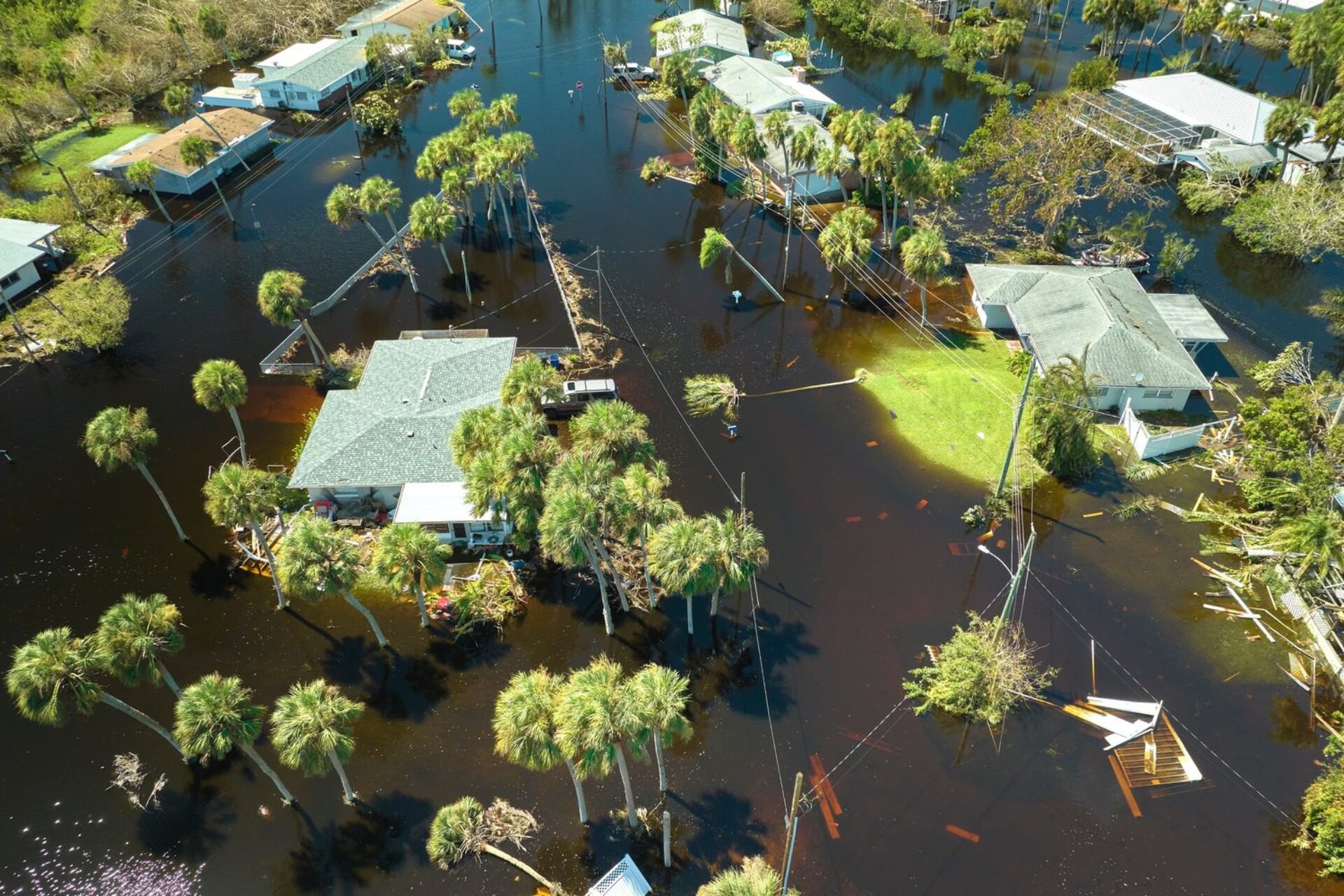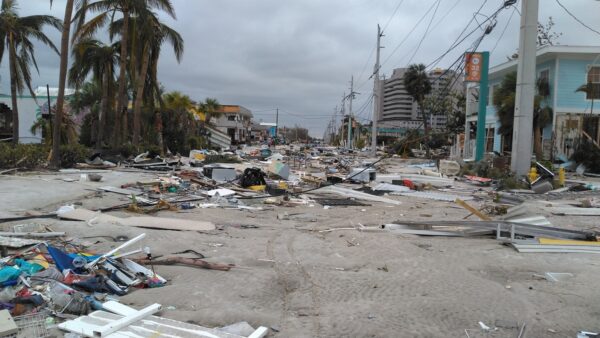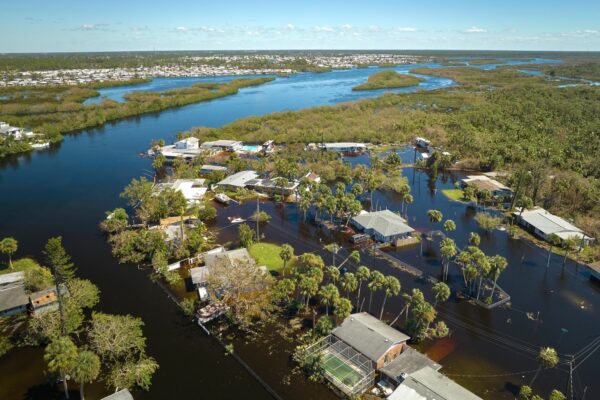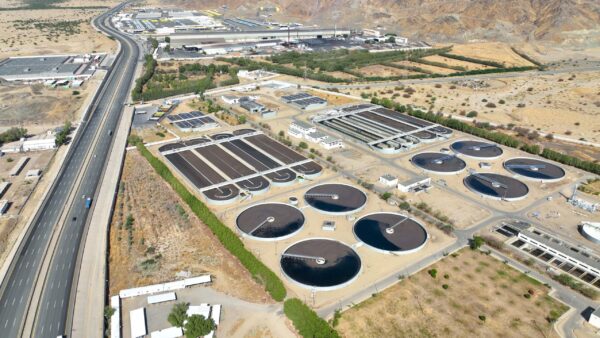
July 13, 2025 | Articles
Tech-Forward Contracting: A Much-Needed Construction Solution

For local governments, implementing rapid, effective disaster recovery projects in the wake of a hurricane presents major challenges. Managing a fraction of the recovery following a major storm can strain a community’s resources, even with federal and state financial support. At ground zero, hurricanes can cripple transportation and utility systems and damage or destroy thousands of critical community structures, including government offices, emergency service buildings, schools, libraries, parks, and recreation facilities. Beyond the built environment, storms can take a terrible human toll.
With the bulk of their staff working to maintain public services and support their impacted constituency, local governments have to implement management tools like work packaging solutions and tailored management plans to get public facilities back online quickly, deliver recovery projects cost effectively, and complete all work in accordance with Federal Emergency Management Agency (FEMA) requirements.
Safety First
Immediately following a hurricane, a local government team charged with leading the recovery efforts should assess its assets to identify hazardous conditions that would prevent safe government operations. A recovery team can then mobilize contractors to complete emergency repairs like demolishing water-damaged drywall and ceilings to prevent mold growth and removing debris, damaged gutters, awnings, and fences to prevent falling object hazards. This will enable local governments to safely deliver public services.

Beyond the initial mitigation of hazardous conditions, even small hurricanes can create large recovery backlogs. Removed gutters, awnings, and fences will have to be replaced. Some buildings may require new roof tiles, drywall, ceiling systems, fans, lighting fixtures, antennas, or other finishings. Such scopes may seem minor, but the work needs to get done. Plus, the large number of small repairs often makes a recovery backlog complex.
Hundreds of sites may require attention by many different types of tradespeople. Depending on the size of the jurisdiction, damaged public assets can be separated by many miles. Especially with a large number of small repair scopes, the commuting time for construction crews between work sites can be two or three times the length of a given repair. Following the repair of hazardous conditions, work sites are often operational and must remain so throughout construction. Insuring and outfitting work crews for small repairs can make a project unattractive to contractors, and difficulty attracting contractors to do this kind of work snowballs into higher costs and a less-predictable schedule for the owner.
Packaging Solutions
To overcome complexity and facilitate the long-term recovery, local governments should logically group the non-emergency repairs into work packages. How the projects are grouped can change depending on the scale of the recovery, the type of work in the backlog, the size of the jurisdiction, or the community’s needs. By grouping the work, local governments can better prioritize the remaining projects, deploy in-house and consultancy expertise as available and as needed, and undertake procurement in a flexible manner appropriate for the shifting needs and limited up-front budget associated with disaster recovery projects.
For example, the local government of a very large county would benefit from grouping their projects geographically. This can help reduce expected travel times between project sites as well as associated costs, making projects more attractive for contractors.
Local governments can also work with industry partners to put together a list of local contractors and small businesses. This will create a larger pool of potential bidders. A larger bidding pool reduces costs and helps ensure there are enough tradespeople to complete planned work, contributing to shorter procurement, as well as more regular progress on the recovery backlog. Working with local contractors and small businesses from the community has the added benefit of infusing funds into the local economy, aiding in the wider recovery.
Planning for Reimbursement
Achieving compliance with FEMA requirements enables reimbursement of funds invested in disaster recovery projects. This helps limit the long-term economic consequences of a natural disaster. For local governments, especially those in areas susceptible to natural disasters, the key to achieving FEMA compliance is to have an adequate management plan in place before disaster strikes. Planning allows local governments to establish management tools like a project management information system (PMIS), tracking and reporting processes, compliance validation strategies, document controls, and communications plans. In addition to facilitating project delivery, such management tools can simplify FEMA compliance and realize timely reimbursement payments.

Expert management consultancy staff can help local governments customize and execute management plans following a disaster. For example, we can help track bids as the recovery proceeds and owner needs change. Following our initial site assessments, we can organize bid tabulations by facility location plus the location of each task within a given facility per FEMA requirements. Since disaster recovery projects often require a wide variety of trade expertise, we can also organize bid tabulations by trade. By doing so while maintaining all relevant location data, we facilitate procurement and keep project records compliant with FEMA requirements. As construction proceeds, we can use our client’s preferred PMIS system to track other important data for FEMA compliance, such as overall project costs and schedules, as well as client-requested changes and associated cost and schedule impacts.
By establishing management processes to promote FEMA compliance early, local governments can be confident that they will recover the costs of their disaster recovery projects, allowing them to make the best decisions for their community.
A Community Recovery
Following any disaster, the restoration of public facilities is crucial to ensuring a baseline of accessible public services as the rest of a community recovers. With fully functional emergency service facilities, police and firefighters can help prevent or mitigate additional disasters in a disaster-stricken community, while emergency medical services teams can better respond to the medical needs of a vulnerable population. Safe access to school facilities prevents students from falling behind in their education. Plus, schools can provide resources that help students cope with the trauma associated with such natural disasters. Rebuilt parks and libraries can provide additional spaces for public services, pop-up medical clinics, and community gatherings. These third spaces also offer joy and, while there may be no return to normalcy following a natural disaster, can help a community move forward.
By effectively packaging their work and planning early for funding compliance, local government disaster recovery teams can overcome administrative and management challenges to reconstruct public assets and help their communities recover from the immense damage caused by hurricanes. As management consultants, we are proud to help our disaster recovery clients customize and execute their management plans, achieve FEMA compliance and reimbursement, and deliver each of their community-critical projects—no matter how small—as envisioned.

About the Author
Pablo Schaer has more than 30 years of experience providing design and project management services on vertical projects around the world. As senior project manager at Hill International, Inc., Pablo provides solutions to help his clients achieve their cost, quality, and schedule goals.
Share

July 13, 2025 | Articles
Tech-Forward Contracting: A Much-Needed Construction Solution

June 23, 2025 | Articles
Jeffrey Hurley Joins Hill’s Northern California Rail Practice

June 23, 2025 | Articles
Ready, Set, Grow: First VP Chad Koelling Takes Charge of Hill’s Mountain West Region

June 8, 2025 | Articles
PMO in Saudi Arabia: The Holistic Approach to Realizing a National Mega-Portfolio

June 1, 2025 | Articles

May 26, 2025 | Articles

May 12, 2025 | Articles
Keeping Your Water/Wastewater Programs Flowing with Public Relations

April 27, 2025 | Articles
Oiling the Machine: Steps to Successful Permitting on Infrastructure Megaprojects